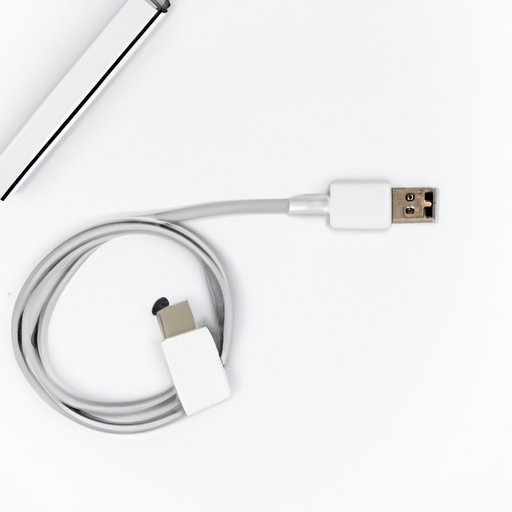I. Introduction
Do you ever wish that your laptop screen was bigger or that you could watch your favorite movie or TV show on a larger screen? Connecting your laptop to your TV is easier than you may think. In this article, we will guide you through the steps to connect your laptop to your TV and help you choose the best connecting method for your needs.
II. Step-by-Step Guide
Before you start, make sure you have a cable that can connect your laptop to your TV. There are different types of cables available, including HDMI, VGA, DVI, Mini DisplayPort, and USB-C. Check the input ports on both your TV and laptop to determine which cable option will work for you. Follow the steps below to connect your laptop to your TV:
- Turn off both your laptop and TV.
- Connect the cable to your laptop and TV according to the ports available.
- Turn on your TV and choose the correct input source.
- Turn on your laptop.
- Adjust the display settings on your laptop to duplicate or extend the display onto your TV.
Make sure you select the correct input source on your TV to see your laptop screen. You should now be able to stream video or display your desktop on your TV screen.
If you need more specific step-by-step instructions, including screenshots, check your laptop and TV manuals or look for online tutorials.
III. Comparison Chart
There are different ways to connect your laptop to your TV, such as using a cable, wireless connection, or a streaming device. Below is a comparison chart of the different methods:
| Method | Pros | Cons |
|---|---|---|
| Cable Connection | Reliable, high-quality video, and audio output | May be inconvenient to use, not suitable for long-distance use |
| Wireless Connection | Convenient to use, suitable for long-distance use | May experience signal interference, lower quality video, audio output |
| Streaming Devices | Provides a broader range of features, high-quality video, audio output | May require an additional subscription, technical knowledge, expensive |
This chart will help you choose the best option for your specific needs and preferences.
IV. Focus on Different Scenarios
There are different scenarios where you may need to connect your laptop to your TV, such as presenting for work, gaming, streaming movies, or using the TV as an extended monitor. Here are some suggestions for specific connection options:
- If you need a high-quality video and audio output for presentation or gaming, a cable connection is recommended.
- If you want to use your TV as an extended monitor, a Mini DisplayPort or HDMI cable connection is required.
- If you prefer a wireless connection, a Chromecast or Apple TV may be your best option for streaming movies or content from your laptop.
V. Discuss Cable Options
Cables are a crucial aspect of connecting your laptop to your TV. Here is some information about the variety of cable options available:
- HDMI: Widely-accepted, high-quality video and audio, supports 4K resolution.
- VGA: Supports 1080p resolution, compatible with older devices.
- DVI: Provides high-quality video output, used for gaming and video editing.
- USB-C: Supports fast charging, data transfer, and video output.
- Mini DisplayPort: Used for high-resolution video output, suitable for gaming and video editing.
Make sure you select the correct cable option suitable for your devices and needs.
VI. Include Troubleshooting Tips
Issues may arise when connecting your laptop to your TV. Here are some common issues and solutions:
- Audio and video are out of sync: Adjust the sync settings on your laptop or TV, or reconnect the cable.
- Screen resolution is incorrect: Adjust the display settings on your laptop or TV to match the required resolution.
- No audio output: Check the audio settings on your laptop and TV, ensure the correct audio source is selected.
VII. Explain How to Turn a TV into an Extended Monitor
If you want to extend your laptop screen onto your TV, follow these steps:
- Connect a Mini DisplayPort or HDMI cable to your laptop and TV.
- Go to the Display Settings on your laptop and select “Extend Desktop.”
- Adjust the screen resolution to match your TV display.
You can now use your TV as an extended monitor for your laptop.
VIII. Highlight the Necessary Equipment
Here are the essential pieces of equipment you will need to connect your laptop to your TV:
- A cable that is compatible with your devices.
- An adapter or extender if needed.
- A wireless device if you want to use a wireless connection.
IX. Conclusion
Connecting your laptop to your TV is easy and can provide a more enjoyable viewing experience. Remember, choosing the best connection method and equipment for your needs is crucial for a high-quality video and audio output. We hope this guide has helped you connect your laptop to your TV successfully.
